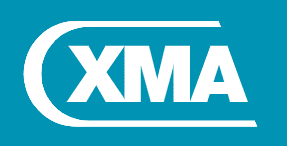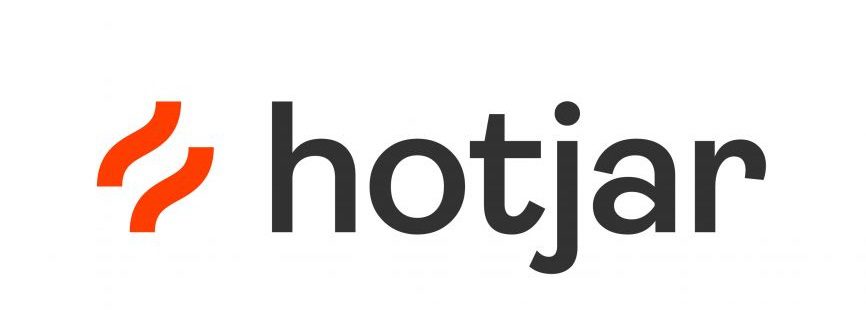Introduction: Hello and welcome to the XMA plug-in, our brand-new informative podcast for IT professionals, where we will be discussing and sharing knowledge on the latest trends across the technology market with key insights from an esteemed panel of industry experts.
Samia Kenley: A very warm welcome to everyone my name is Samia Kenley and I’ll be your host for the first ever XMA plug-in podcast, we’re very excited to start sharing our expertise across a range of broad IT discussion points, every episode I’ll be inviting guest speakers to join me in our chat room and today I’m joined by XMA commercial director Andrew Wright and technology solutions manager Rhys Parfitt; welcome Andy and Rhys.
Andy Wright: Hi there
Rhys Parfitt: Hi, how we doing?
Samia Kenley: Hello and thank you both for joining us for our first podcast and being in the hot seats, so for today’s session we’ll be talking about Windows 7 end of support one of the biggest IT focus points across both private and public sector, whereby any device still operating on Windows 7 should no longer be considered safe from cyberattacks. The announced deadline from Microsoft has been set for the 14th of January 2020 with only six months left to go, so Andy let’s start with you what does Windows 7 end of support actually mean for businesses and why should this be a top priority for organizations?
Andy Wright: I think it’s a very simple and straightforward answer and that’s something that worries all of us in IT, which is security and security of our data when we know something is no longer supported there will be no security updates whatsoever from Microsoft and what does that mean for me as an individual? it means that people who want to hack me will know where to go in terms of hacking my core systems. Windows 10 is about being up-to-date and securing your devices and hence your data, the world we live in now in terms of GDPR and we’ve seen lots of examples already with the new GDPR rules of people being fined, mean that this is a really important upgrade. We saw when people were moving to Windows 7 the problems that were encountered with people not moving. So, lots of people remember wannacry, which was a ransomware that particularly hit the NHS hard, most of that could have been stopped by security updates and actually by being on the latest operating system. The parts of NHS which were most affected were still running old systems window XP for example, which had clear security flaws in them that needed fixing and actually one of the things that people do need to remember as well is when Microsoft will update Windows 10 some of the vulnerabilities that they’ll find in Windows 10 exist in Windows 7, in other words those vulnerabilities will be signpost to cyber criminals, so people will absolutely know where to go in terms of breaking into your systems, so I’ll just say it again this is about security.
Samia Kenley: Oh thank you Andy that’s really insightful, Rhys what would you say are the biggest risks for organizations?
Rhys Parfitt: Yes, you know Andy has summarized really well there what all those core ones are you know I think, that ability for any sort of cyber attacker to look at exploits that sit in the architecture of Windows 7 currently and having that open doorway to them and pinpointed very quickly certainly the biggest one. I think outside of the operating system itself it’s them being aware that certain applications they use may not have the sort of functionality and updates for those legacy operating systems as they move forwards as well, but certainly it’s all about security.
Samia Kenley: Oh wow thank you very much, so now we’ve identified all the reasons why migrating to Windows 7 is very important, so a question for both of you for the benefit of our listeners who are at the beginning of their migration journey what’s the biggest consideration they need to make in the early stages of a project?
Rhys Parfitt: So certainly what we’re seeing first and foremost, is businesses need to take the time to properly understand their estate what they users look like from how they actually access line of business applications and the things that are actually critical for them on a day to day basis around how they operate, the reason why that’s so important is they’ve got to be able to know that they can make the move to Windows 10 with absolute certainty there’s going to be no impact to any of those from a day-to-day operations perspective. It’s really interesting that we’re actually seeing different customers approach these projects completely differently from, depending on their exact requirements one challenge that’s consistent with all customers is although Microsoft have made available a number of free tools to help capture information around what will be compatible that can run from a device and applications perspective on Windows 10 moving forwards, it’s actually very very hard for customers to get meaningful data that they can make actionable decisions on around that. With regards to applications being compatible on Windows 10, it’s also forcing customers to look at what the right applications are that they use in their organization today, so we’re seeing a number of customers starting to look more at cloud-based applications to replace some of those ones that they operate on a daily basis today.
Samia Kenley: Oh wow that’s really interesting actually and Andy what have we learnt in the process?
Andy Wright: I think we’ve learnt the old adage that you need to plan, this is not quick and easy it varies in terms of complexity probably depending on how many applications you’re running, but like any project if you’ve not planned for it, not worked out the pitfalls the destination then the project tends to be less than optimal which is a nice way of saying the project tends to fail and this is you know from our point of view this is hopefully the last big windows migration, I’m going to show my age next I can remember Windows version three and we’ve gone through iterations where the standard process is the OS is four five six years old the next version of Windows comes along and you move to it. Windows 10 in theory should be the last time we have to do that the last heavy lift, because all updates will be delivered to Windows 10 directly from Microsoft and directly out to the users devices and now I probably can smoke for saying this very much like how your Apple iPad and your Apple iPhone work so pushing regular updates to users, so that in theory there should be no big shift when we get to Windows 11, or Windows 12 or whatever Microsoft call the next version it’ll be delivered remotely, so you know getting this done getting it right and reaping the benefits, as well as I’ve already said in terms of securing data and client devices is really important.
Samia Kenley: Oh perfect and so Rhys, let’s say the listener now has upgraded to Windows 10 they cast their migration project as finished but now there’s a whole world of potential out there for them, what would you say are the next big projects to consider?
Rhys Parfitt: So, there really are a sort of wealth of projects and in particular around further adopting some of Microsoft’s other cloud-based technologies in order to you know really sort of reap the benefits you know not just associated with Windows 10 and the additional security but around lots of other things they’re trying to achieve around, productivity of their workforce you know, access to data and being able to actually just sort of collaborate better, not just within their own organization but with their customers and partners, but there’s sort of most common projects we’ve seen have been a lot of customers buy default because they want to leverage Microsoft’s autopilot deployment technology, are already starting to migrate their Active Directory into Azure, that’s typically being followed by them also moving their email services either to exchange online or into office 365. I mentioned earlier around this sort of greater uptake in cloud applications or replacing any previous sort of legacy applications that’s forcing customers to look at how they’re backing up those applications in the cloud along with o365 what they’re also doing around cloud application security, coming back to autopilot you know the whole benefits of autopilot is really to have a zero touch deployment and that’s got benefits operationally for the IT departments in organizations because, it’s a much more efficient way of deploying those devices but also linked with it is a really great experience for the user, because everything’s provisioned and there for them to be able to start working with sort of minimal intervention from anyone. The reality that we’re actually seeing and we’re starting to have more customers work with us around some of the White Glove services associated with this is that they can’t fully automate everything that’s required for that auto pilot experience so, what we’re doing is if it’s around the provision of certain applications or any other sort of data that needs to be pre-configured on those devices we’re actually doing that as part of the process in the background so that our customers user experience is still as should be expected from a zero to sort of touch point of view, we’re also seeing a lot of customers requesting some consultancy and support around certain elements of enterprise mobility suite, so in particular around Azure information protection, Azure advanced threat analytics and then I suppose kind of linked back to active directory, a lot of customers already wanting to make sure they’ve got some additional solutions in place around multi-factor authentication.
Samia Kenley: Wow that’s a lot of projects to consider, Andy do you think that businesses are aware of all the challenges and benefits, or do you think maybe it’s a matter of they are aware perhaps don’t know where to begin?
Andy Wright: I think when we look across our customer base we’ve got people at all levels so I think we’ve got people who absolutely understand the challenges they’ve got in front of them and where they need help and assistance I think we’ve got other people who perhaps haven’t even got as far as looking at this as a project yet and perhaps don’t understand that you know time is of the essence and what that means is that we’re having lots of different engagements with our customers so, some are looking for us to do the whole project, some of them are looking for us to augment their internal resources either with skills and knowledge of having done this before or just actually resource to help get the deployment done, because obviously it’s a big block of time and effort for people and I think when you look at people’s understanding of what Windows 10 brings, I mean clearly part of it is that we’re heading to you know just the latest version and it’s almost a natural step, it’s the thing we’ve all done in IT for 25 years is go to the latest version of Microsoft, but I think we’re also seeing people look at it as beneficial in terms of automation of processes, they’re taken away some of the burden that is being imposed on the IT team and allowing them to do more interesting things, but it also gives a platform for people to expand what they’re doing. We’ve certainly seen people as they make this Windows 10 move start to really grasp the value of office 365 sat on the platform and also actually it’s allowing people to bring different device types into the business so rather just necessarily laptops we see more people deploy laptops, convertibles, hybrid devices that allowing their workforce to do their jobs in a different way and allowing people to be more productive, so you know it’s a great change that people are starting to see in the workspace.
Samia Kenley: So to summarize we’ve identified the biggest risks that organizations are facing, why migrating is very important and companies to take it very seriously and also as XMA what support we can offer our customers. Well thank you both for joining us it’s been really really insightful for both myself and I’m sure all our listeners, and of course if any of our listeners have any questions around their own migration project, whether it is started on that journey halfway through and now thinking what next? please do get in touch with our general experts at XMA all our contact details are on our podcast page. Thank you again Andy and Rhys and thank you for listening to the XMA plug-in, catch you next time.









 Monitoring by Hotjar
Monitoring by Hotjar